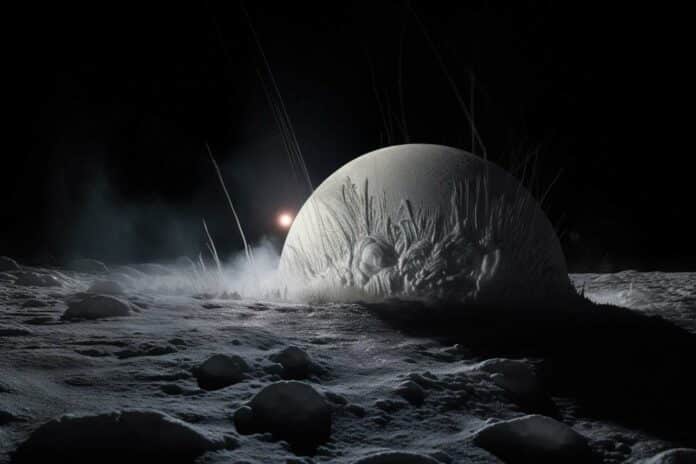The Cassini spacecraft saw that one of Saturn’s moons, Enceladus, shoots out jets from its south pole. Scientists used the Ion and Neutral Mass Spectrometer (INMS) on Cassini to study the compounds in these jets. They found water (H2O), carbon dioxide (CO2), methane (CH4), ammonia (NH3), and hydrogen (H2) in the material that’s ejected. Figuring out the more minor ingredients in the jets is challenging because so many combinations could match the data from INMS.
A recent study found some important Enceladus compounds that make it good for life. They discovered compounds like HCN, C2H2, C3H6, and C2H6, which are all helpful for making a place habitable.
Led by Griffin Graduate School of Arts and Sciences student Jonah Peter, this joint Harvard-NASA study found hydrogen cyanide, a poisonous gas that’s also a molecule central to the origin of life, within the plume of water vapor shooting from the moon’s surface.
Peter is a biophysics graduate student who performed much of the research while working at NASA’s Jet Propulsion Laboratory with co-authors Tom Nordheim and Kevin Hand. Peter said, “Our results demonstrate that Enceladus is host to some of the most important molecules for both creating the building blocks of life and sustaining that life through metabolic reactions.”
“Life requires building blocks such as amino acids, and hydrogen cyanide is one of the most important and versatile molecules needed to form these compounds.”
Hydrogen cyanide is a versatile tool for making amino acids because its molecules can be arranged in many ways.
Scientists also found that Enceladus’s hidden ocean, beneath its icy surface, has a vital energy source in the form of organic compounds. Some of these compounds on Earth are used as fuel by living organisms.
Enceladus not only meets the basic conditions for life but also gives us insights into how complex molecules necessary for life could form there and the chemical processes involved.
Peter said, “Our recent work uncovers evidence for additional energy sources far more powerful and diverse than the making of methane: We found an array of organic compounds that were oxidized, indicating that there are many chemical pathways to sustain life in Enceladus’s subsurface ocean potentially. That’s because oxidation helps drive the release of chemical energy.”
While it’s not confirmed that life could start on Enceladus, recent research provides potential chemical routes for life that scientists can experiment with within a laboratory setting.
Journal Reference:
- Peter, J.S., Nordheim, T.A. & Hand, K.P. Detection of HCN and diverse redox chemistry in the plume of Enceladus. Nat Astron (2023). DOI: 10.1038/s41550-023-02160-0
